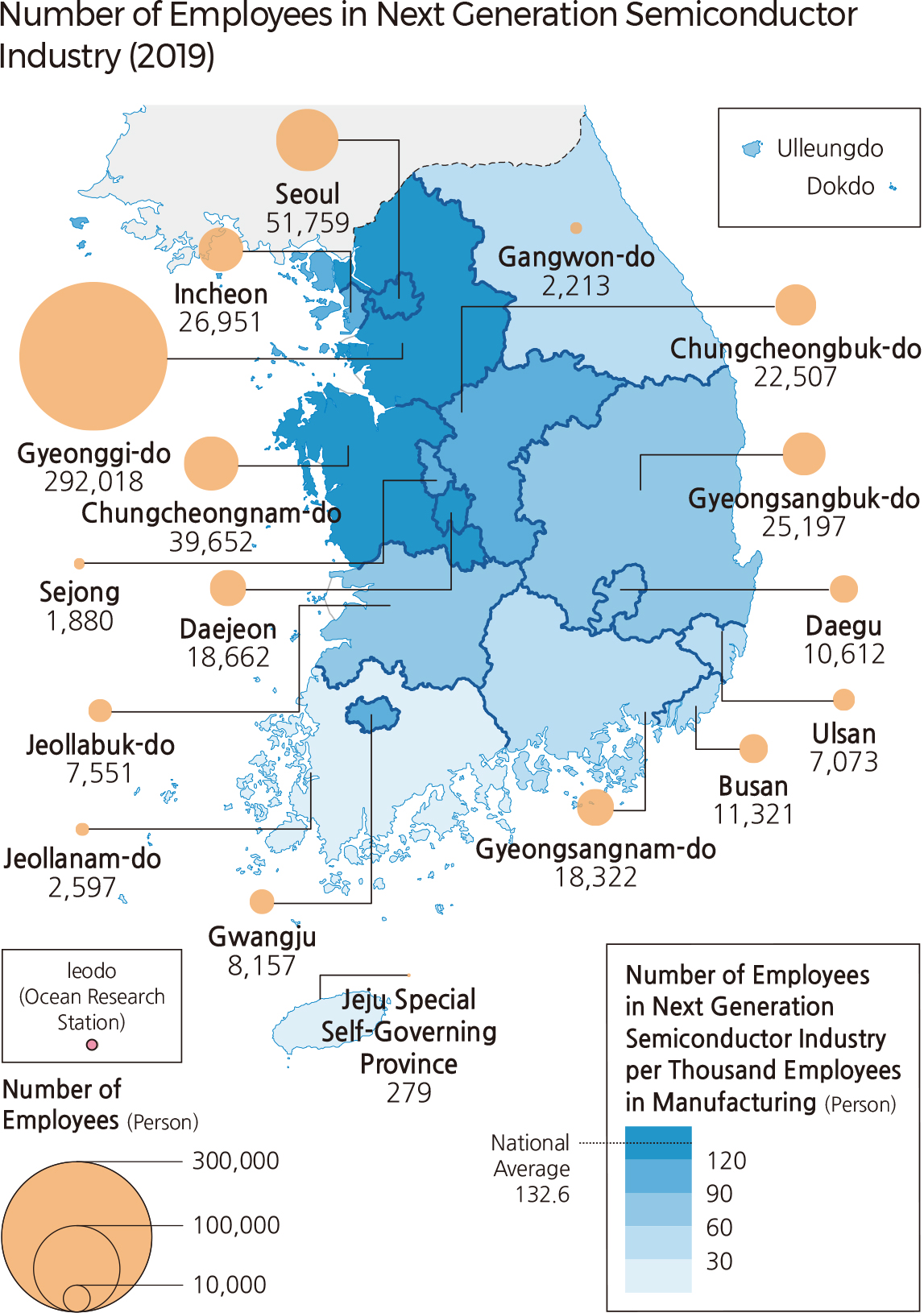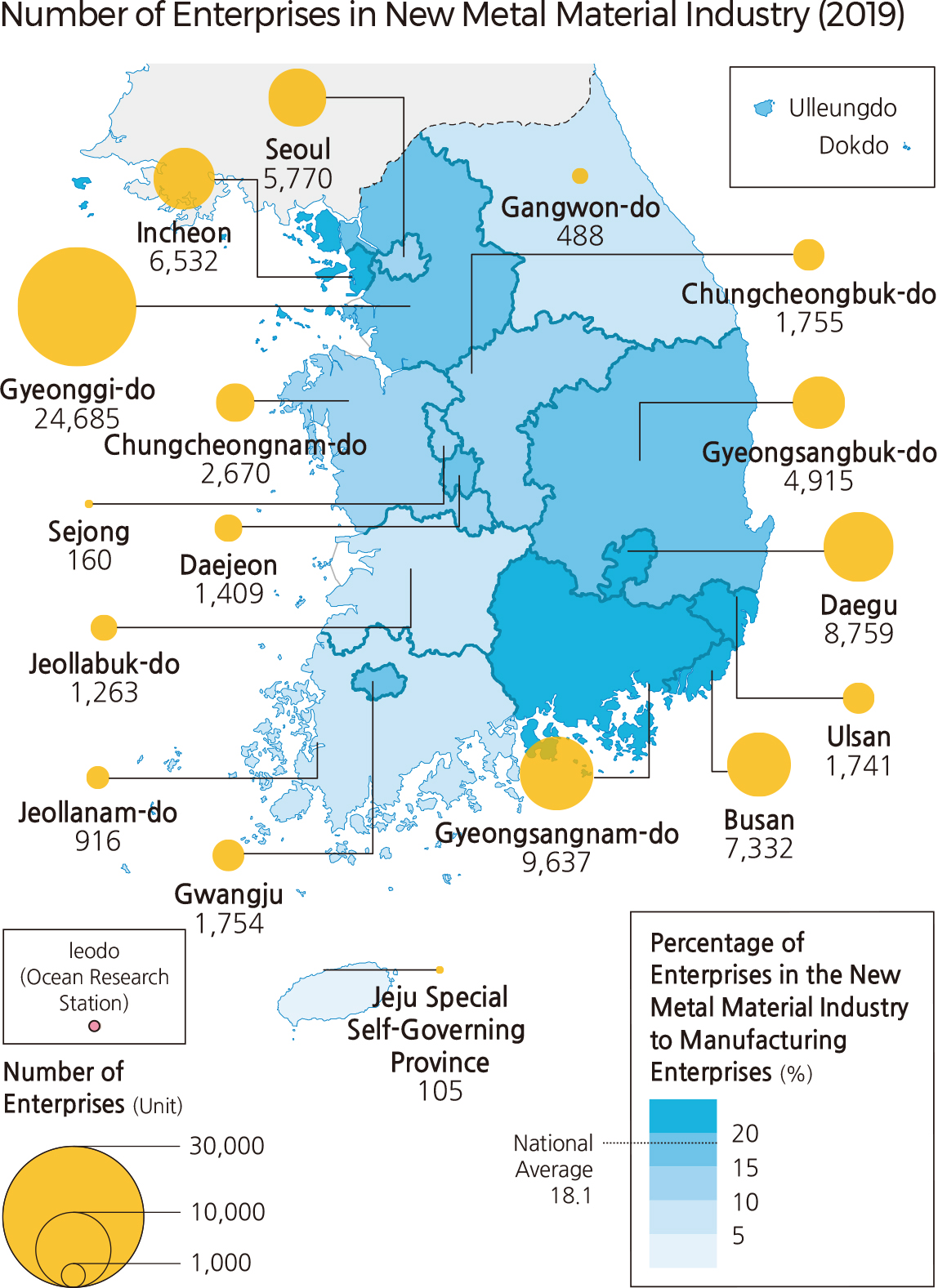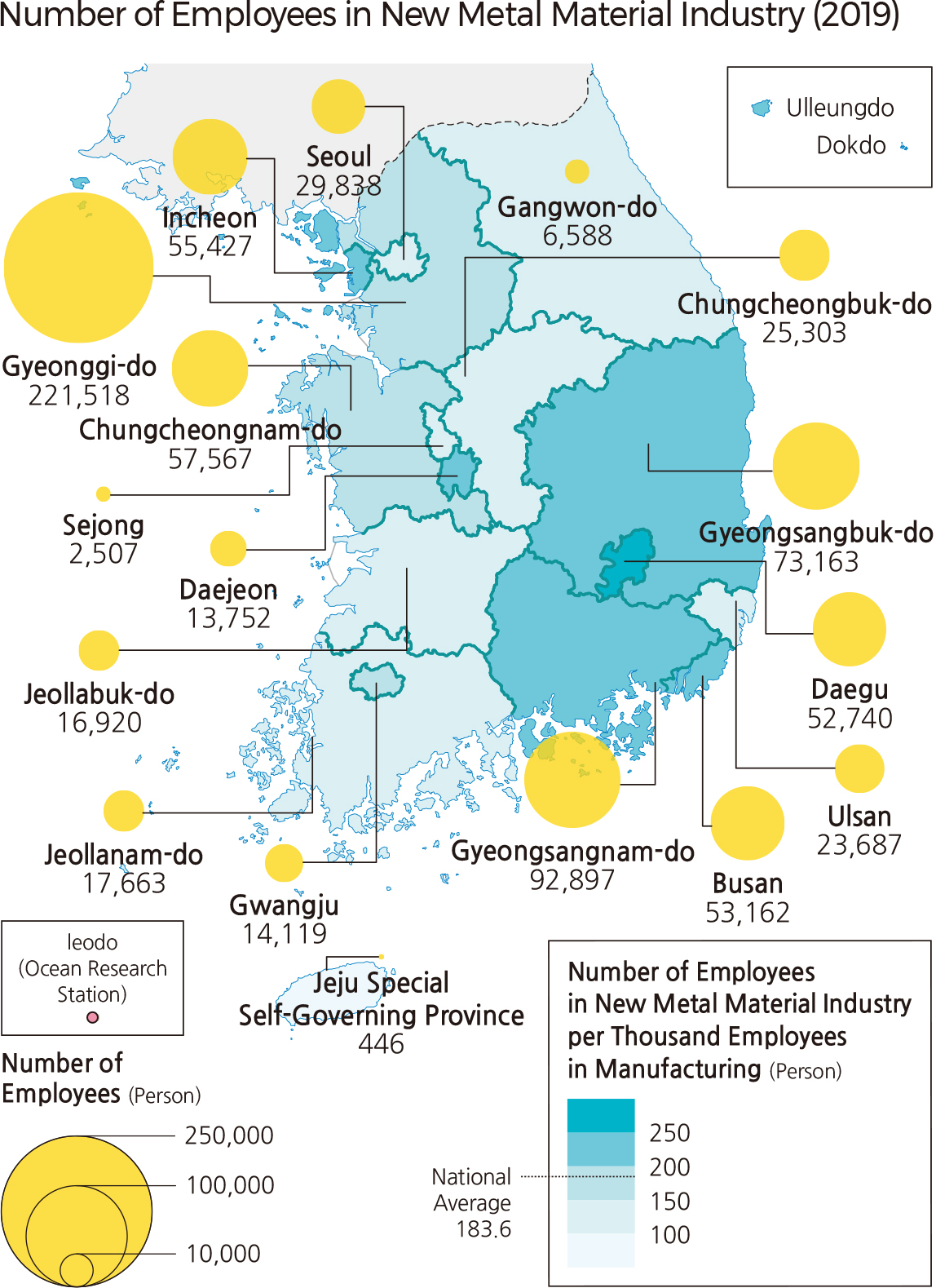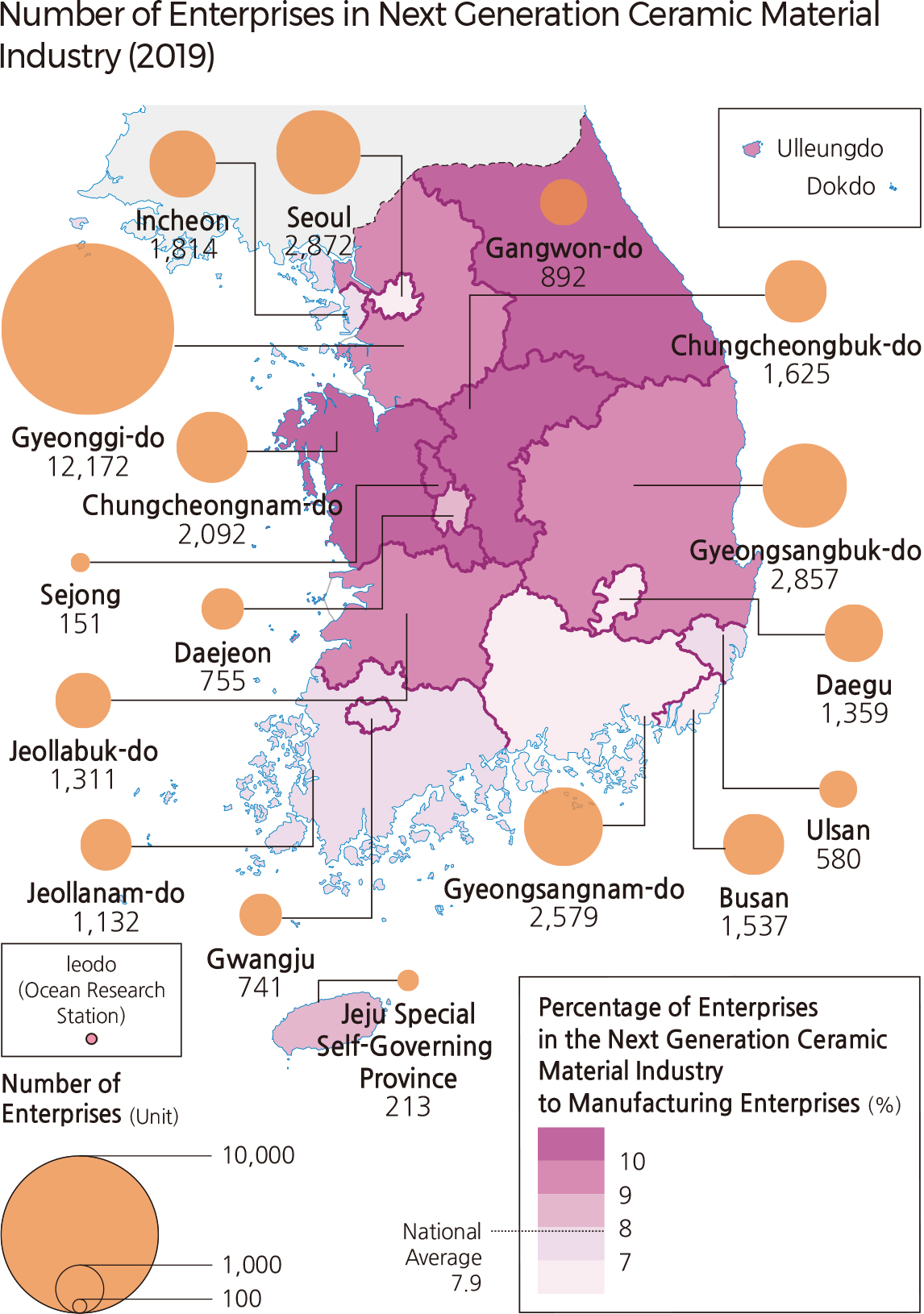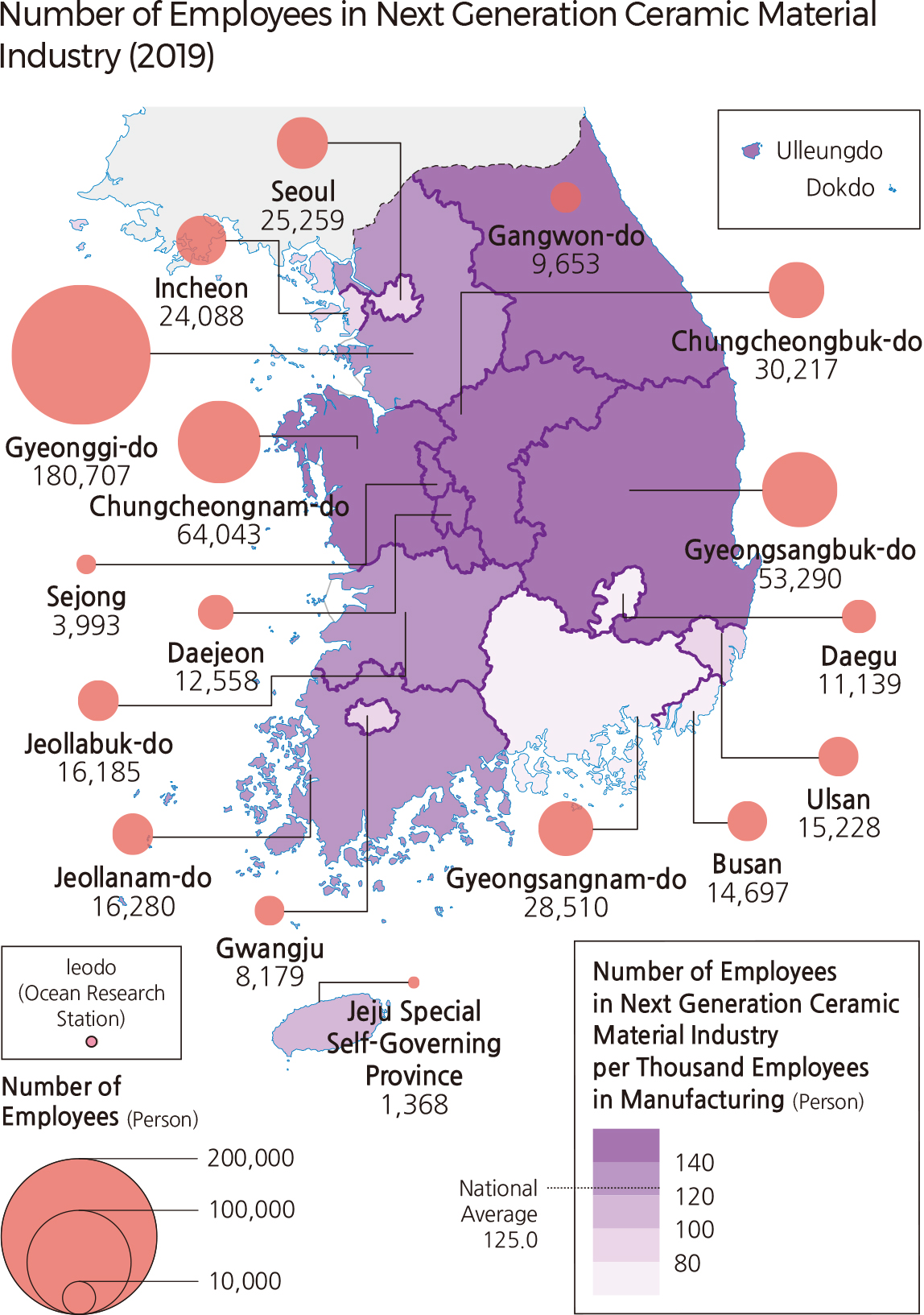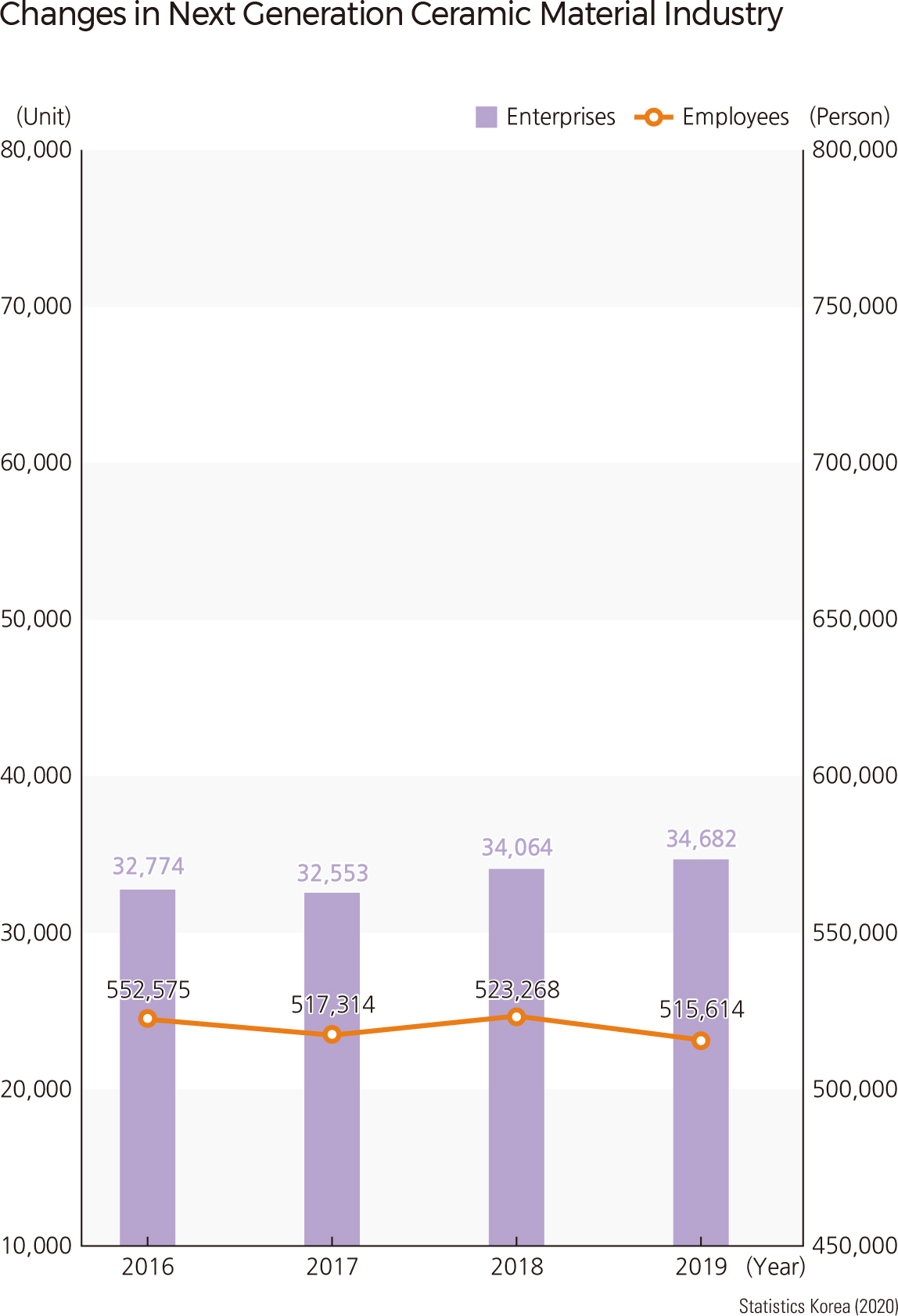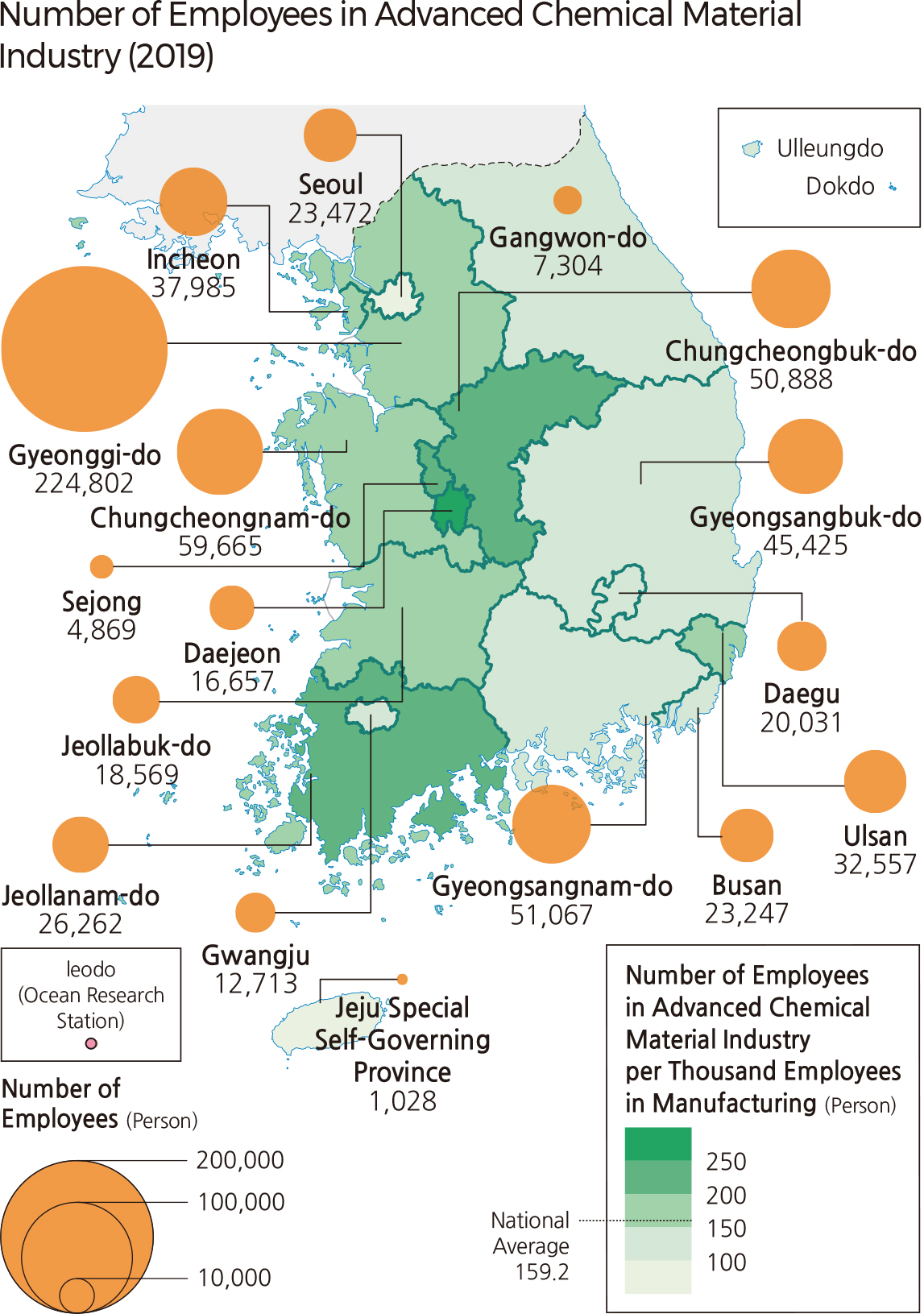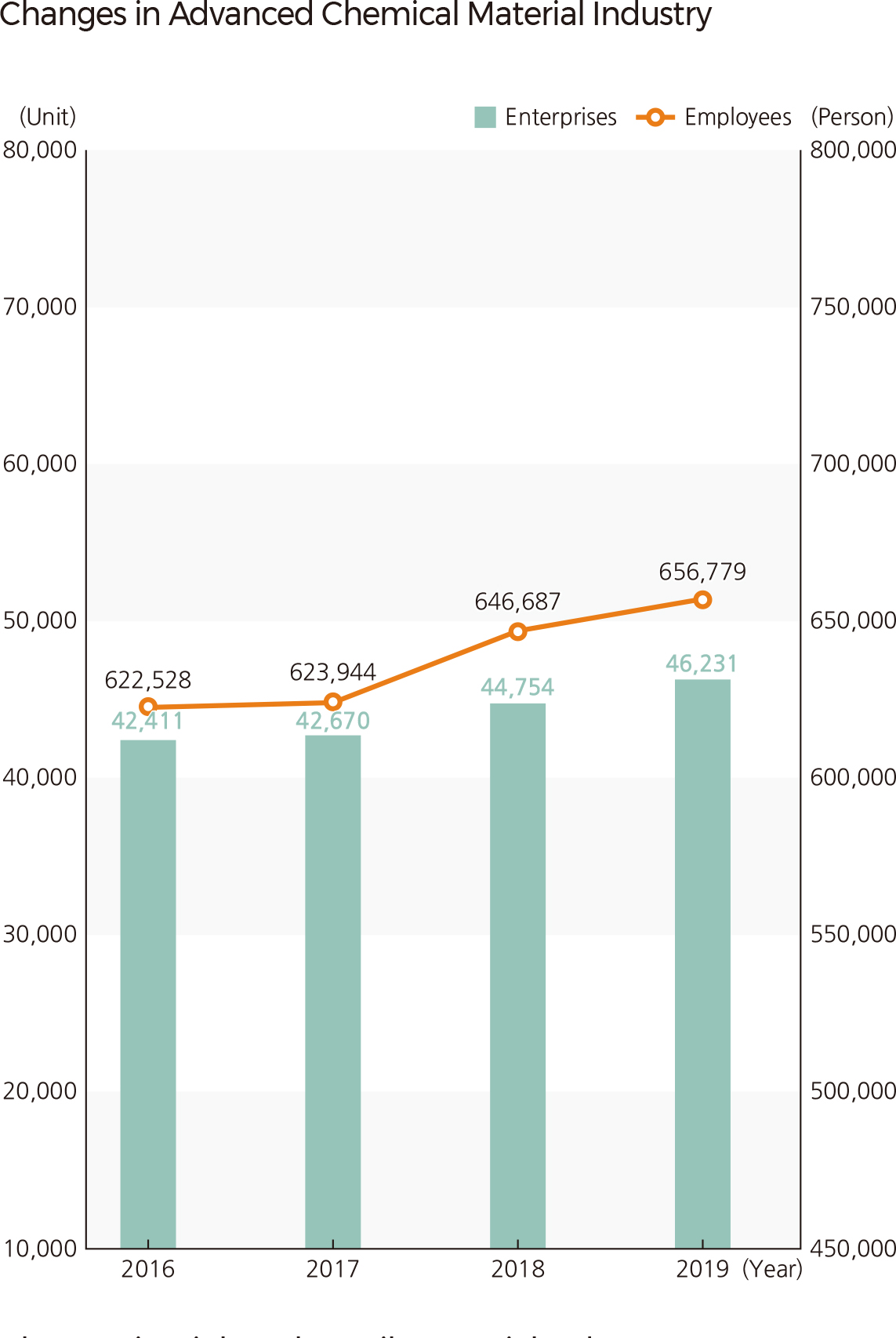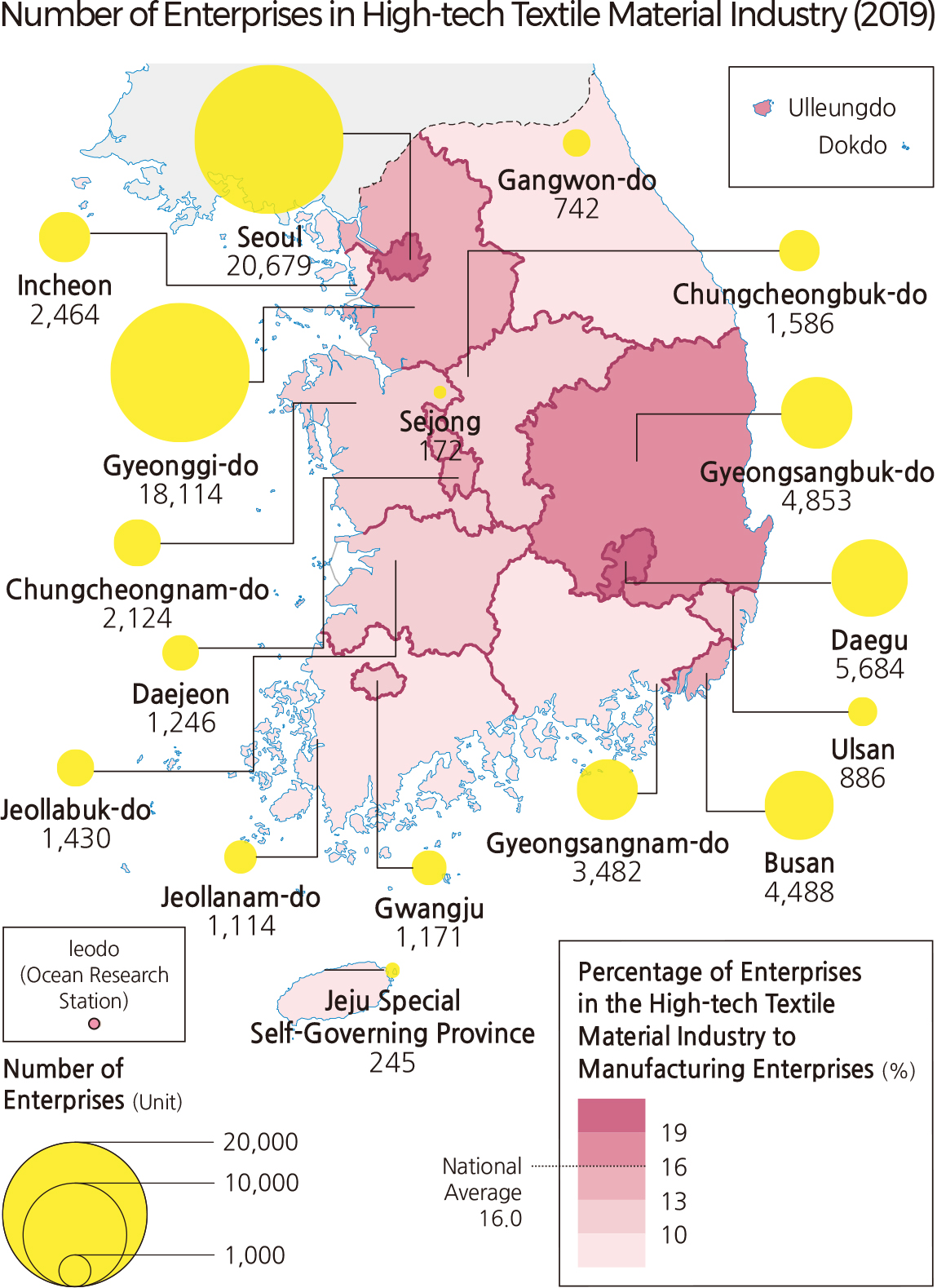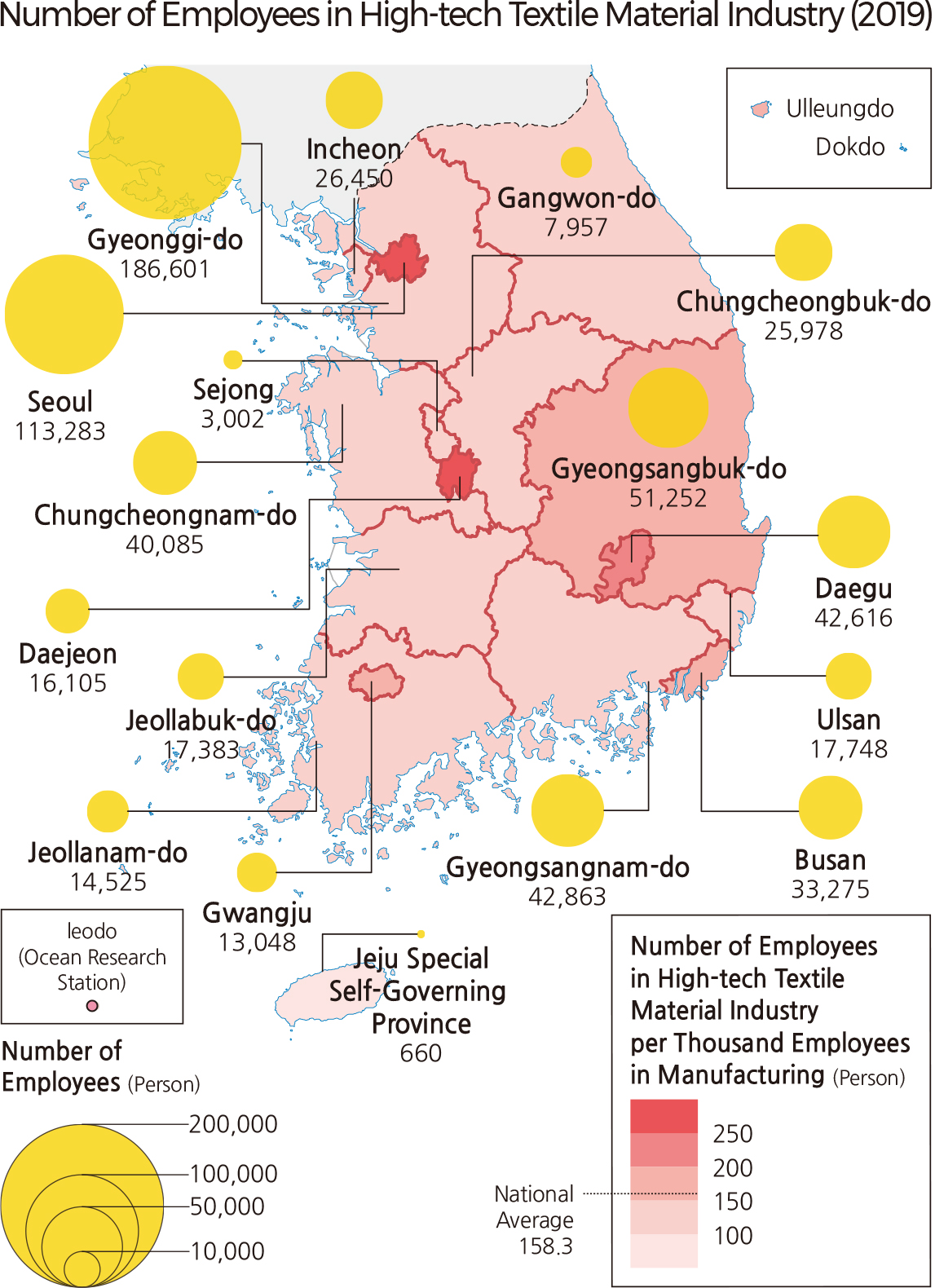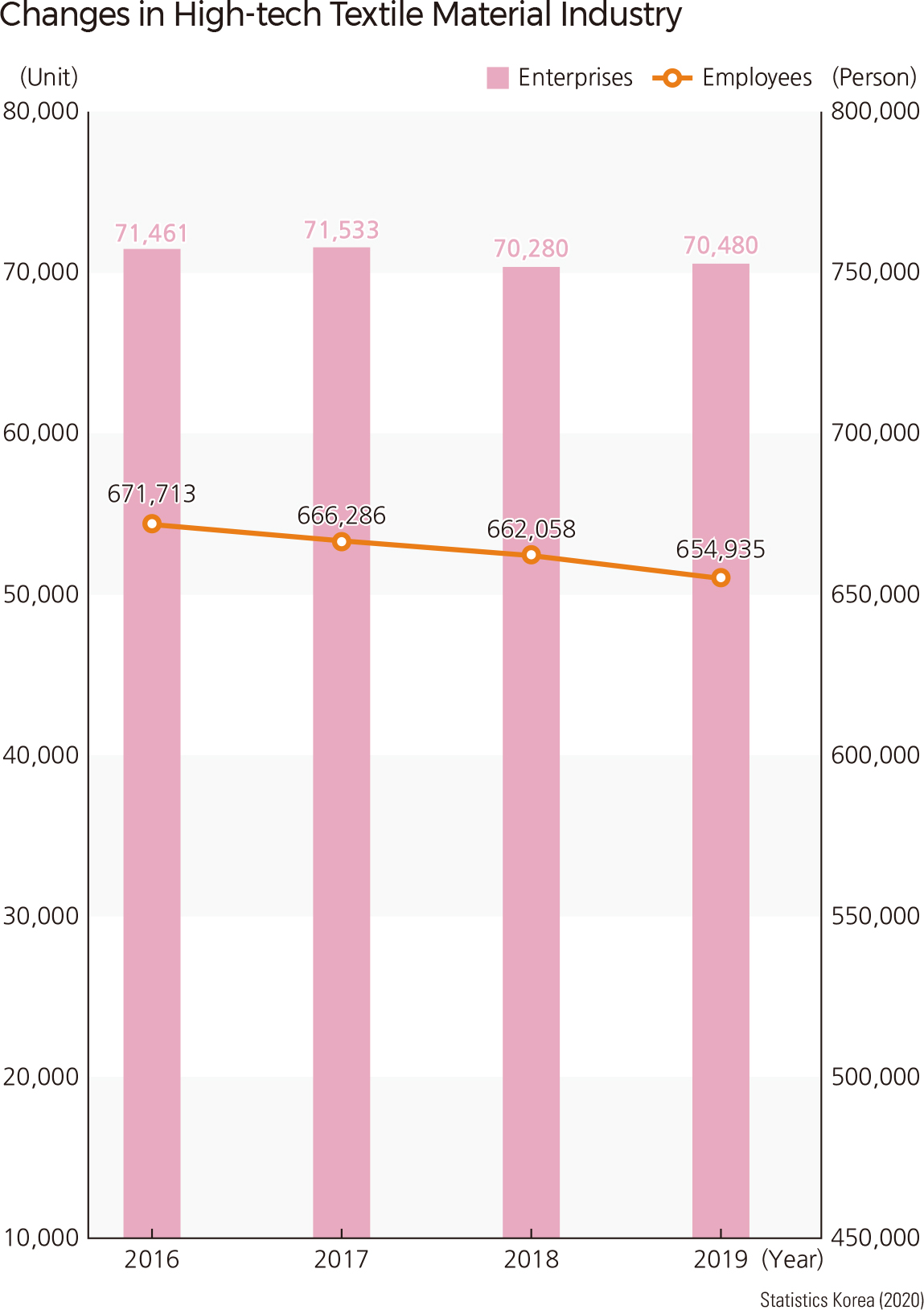English III 2021
In March 2021, the Ministry of Trade, Industry and Energy (MOTIE) announced ‘the top five emerging industries’: 1) the next generation semiconductor industry, 2) the new metal material industry, 3) the next generation ceramic material industry, 4) the advanced chemical material industry, and 5) the high-tech textile material industry, and emphasized the necessity of nurturing the specialized human resources suitable for the industries. The maps of the numbers of enterprises and employees indicate the characteristics of spatial distribution and the recent changes in the top five emerging industries based on the 5-digit codes of KSIC, which are jointly suggested by the Ministry of Trade, Industry and Energy (MOTIE), The Korea Institute for Advancement of Technology (KIAT), and The Korea Institute for Industrial Economics and Trade (KIET). ‘The next generation semiconductor industry’ designs and manufactures semiconductors that are used as cutting-edge core industries, such as artificial intelligence robots, virtual reality or augmented reality contents, autonomous vehicles, and next generation mobile communications. The next generation semiconductor industry is subdivided into memory semiconductors, system semiconductors, semiconductor manufacturing processes and facilities, and semiconductor materials. The number of enterprises and employees for the next generation semiconductor industry ranked by descending order were Gyeonggi-do, Seoul, Chungcheongnam-do, Incheon, and Gyeongsangbuk-do. The new metal material industry develops or manufactures new metal materials to improve the properties of existing materials through alloys. The new metal material industry is subdivided into ultra-supercritical steel materials, high functionality non-ferrous materials, and new composite materials. The number of enterprises for the new metal material industry ranked by descending order were Gyeonggi-do, Gyeongsangnam-do, Daegu, Busan, and Incheon. The number of employees for the new metal material industry ranked by descending order were Gyeonggi-do, Gyeongsangnam-do, Gyeongsangbuk-do, Chungcheongnam-do, and Incheon. The next generation ceramic material industry develops or manufactures new ceramic materials to improve the properties of existing materials using natural and synthetic materials. The next generation ceramic material industry is subdivided into optoelectronic ceramic materials, artificial intelligence ceramic materials, energy and environmental materials, medical ceramic materials, and living industry ceramic materials. The number of enterprises for next generation ceramic material industry ranked by descending order were Gyeonggi-do, Seoul, Gyeongsangbuk-do, Gyeongsangnam-do, and Chungcheongnam-do. The number of employees for the next generation ceramic material industry ranked by descending order were Gyeonggi-do, Chungcheongnam-do, Gyeongsangbuk-do, Chungcheongbuk-do, and Gyeongsangnam-do. The advanced chemical material industry develops or manufactures high value-added chemical materials by giving special functions, such as heat resistance, strength, optics, safety, and eco-friendliness. The advanced chemical material industry is subdivided into precision function chemical materials, high-tech polymer materials, and high-tech materials for industry. The number of enterprises for advanced chemical material industry ranked by descending order were Gyeonggi-do, Gyeongsangnam-do, Gyeongsangbuk-do, Seoul, and Incheon. The number of employees for advanced chemical material industry ranked by descending order were Gyeonggi-do, Chungcheongnam-do, Gyeongsangnam-do, Chungcheongbuk-do, and Gyeongsangbuk-do. The high-tech textile material industry develops or manufactures yarn and textile materials with special functions. The high-tech textile material industry is subdivided into fashion tech textile materials, technical textile material for consumer goods, and technical textile material for producer goods. The number of enterprises for the high-tech textile material industry ranked by descending order were Seoul, Gyeonggi-do, Daegu, Gyeongsangbuk-do, and Busan. The number of employees for the high-tech textile material industry ranked by descending order were Gyeonggi-do, Seoul, Gyeongsangbuk-do, Gyeongsangnam-do, and Daegu. According to the changes of the top five emerging industries in the last four years, the numbers of enterprises and employees for three industries, such as the next generation semiconductor industry, the new metal material industry, and the advanced chemical material industry, were increased from 2016 to 2019. In the case of the advanced chemical material industry, the number of enterprises is increased, whereas the number of employees is slightly decreased. However, the numbers of enterprises and employees of the high-tech textile material industry were decreased during the same period. |

